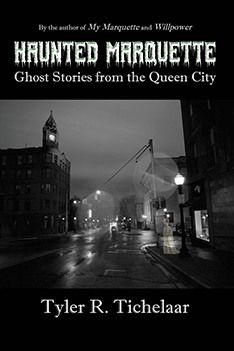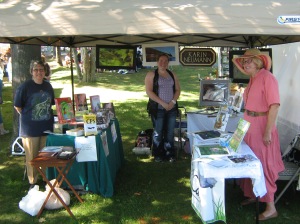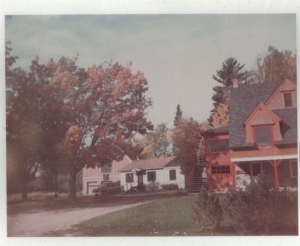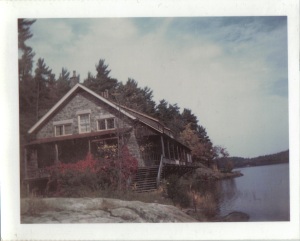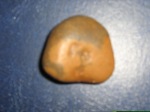The following article is an excerpt from my book My Marquette, beginning with a scene that takes place at the Delft Theatre in my novel Superior Heritage: The Marquette Trilogy, Book Three
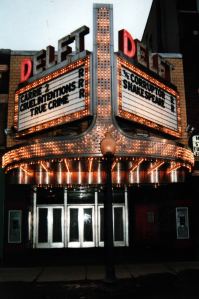
Delft Theatre Marquette, circa 1998, courtesy of Sonny Longtine
:
On Saturdays, John and Chad often went to matinees at the Delft Theatre. The movies were not always spectacular, often children’s shows they had outgrown. Robinson Crusoe, The Journey of Natty Gann, The Watcher in the Woods were films soon forgotten, but that hardly mattered; the true glamor was being at a movie theatre, especially the fabulous old Delft. This theatre, perhaps more than any place in Marquette, evoked history to them. When the boys saw Annie, they were impressed by the glamorous scene when the characters from the 1930s go to the movies at Radio City Music Hall, and the ushers danced down the aisle with flashlights to show them to their seats. The boys could just imagine that in its heyday, the Delft had been a similarly magical movie showplace. For seventy years, the theatre had stood along Washington Street, the most notable building on the block. During its long life, the theatre had shown films and been the sight of public performances. Now, as the theatre fell into neglect, its former grandeur made it all the more enticing. It was the only theatre in town with a round little ticket window inside the front door. From there rose a long hallway that led to double doors where the usher collected your ticket so you could enter a splendid fantasy world. Then you went down a tall flight of stairs until you came to the concession stand where a cluster of people competed for the cashiers’ attention to buy popcorn, raisinettes, coca-colas, and sometimes, even ice cream! The concession stand was against the left wall while the right wall had a giant window that looked into the theatre itself so even the concession workers could watch the film when they were not busy serving customers.
The theatre walls were covered with winter scenes of children sledding. Protruding from the ceiling was the magnificent big round metal thing no one could define—it was not a chandelier because it had nothing to do with lighting; it had giant rings, one inside another, like a spaceship hovering over the audience, which only added to the atmosphere when watching Return of the Jedi, The Last Starfighter, or 2010.
Most impressive of all, the Delft boasted the largest screen in the Upper Peninsula—they did not make movie theaters with such big screens anymore. Drive-ins were now all but extinct and most old movie theaters had been replaced by multiplex cinemas. John had heard tales of such theaters from friends who had seen them downstate; he had heard that if you did not like a movie, you could sneak into another one, so you could see parts of three or four films on the same night. John thought this silly since you would never get to see a full film. He did not imagine Marquette would ever be big enough for a multiplex cinema. Three theaters, each showing one movie, was enough variety for Marquette. — Superior Heritage
The Delft Theatre was actually part of a chain. Iron River, Munising, and Escanaba also had their own Delft theatres, built to look like Dutch buildings—hence the name Delft. Marquette’s Delft Theatre has survived the others.
The theatre was built in 1914 and initially, besides showing silent films, had a stage for vaudeville and other performances. The Marquette Opera House across the street would have provided more “cultural” forms of entertainment.
About 1950, the stage was closed off and the movie screen—the largest ever in Upper Michigan—was permanently put into place. Then in 1985, it was divided into two separate rooms and screens, thus breaking up the U.P.’s largest screen. In the next decade, it was divided again, this time into five screens. Considerable remodeling was done at that point, including having the main entrance transferred from Washington Street—where the lighted marquee still hangs, to Main Street. As children, my brother and I always thought it a mystery how one could enter on Washington Street and exit on Main Street; we could not believe the metal shaft that crossed the alley was really all of the Delft Theatre.
The original entrance to the Delft Theatre was on Washington Street where from the ticket booth you walked up a long sloping floor to another door where your tickets were collected. This large room is now the top floor theatre. When this section was remodeled, a Chinese painting was discovered from the theatre’s early days. It has now been preserved and graces this individual room. The stairs to reach this top room were initially the stairs down to the concession stands on the left wall, and the giant theatre was on the left. In the back of the main theatre was a low wall, so if you got up from your seat to go to the bathroom, you could still watch the movie as you walked past the concession stand, or if you waited for your popcorn.
Despite the magic of going to the Delft Theatre, the bathrooms were another story. You had to go down into the basement, where a sort of lobby existed which had off it the dirty smelly bathrooms with old looking plumbing. The lobby always seemed to be filled with high school and college students who were smoking, a scary experience for little kids—especially in those days when parents thought nothing of sending their children to the bathroom on their own—but despite scary smoking college students, children were safe in the Delft Theatre. Today the main lobby and concession stands are where the restrooms once were located.
The interior of the main theatre room in the old days is accurate as described in Superior Heritage. I could not even begin to list all the movies I watched there, but I do remember the very first one. It was a few days before Christmas 1974 and I was three years old. My family had just moved into our new house in Stonegate by the Crossroads, and my dad took me to the movie so my mom could focus on unpacking. The movie was terrible—it was a Christmas film with Santa Claus being chased by the Devil who was out to stop him from delivering presents; in one scene, the Devil moved a chimney so Santa could not get inside a house and in another Santa had to climb a tree to escape an angry, barking dog. I’ve never been able to find out the name of this movie—nor am I surprised it’s never been released on video. It wasn’t fit viewing for a three year old.
Other early films I remember seeing at the Delft were the Disney cartoons—Pinocchio, Peter Pan, and Snow White. By middle school, my brother and I could go on our own—my mom would drop us off at the Saturday matinees to attend the same films Chad and John attend in Superior Heritage.
I miss the Delft’s giant screen and reasonable prices for candy at the concession stand, but I think Marquette residents will agree with me that even with five screens, we are happy the Delft is still there with its marquee brightly lit to make Washington Street distinct. Long may the movie magic live on.

